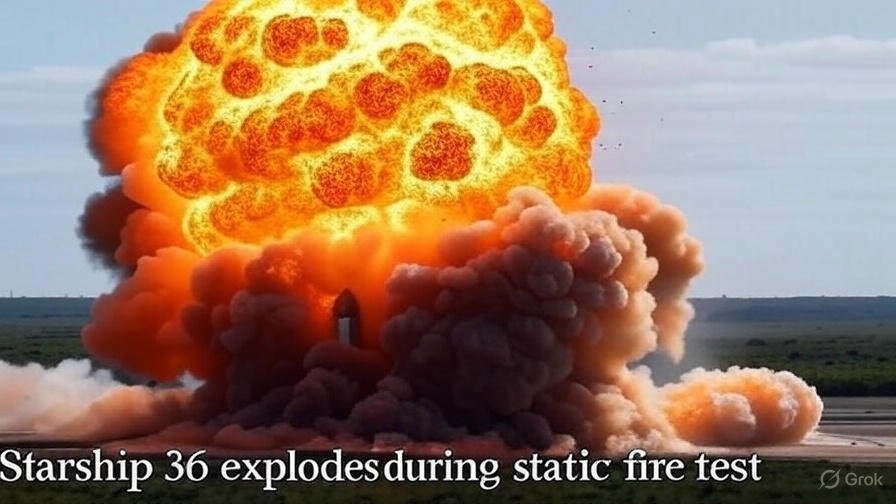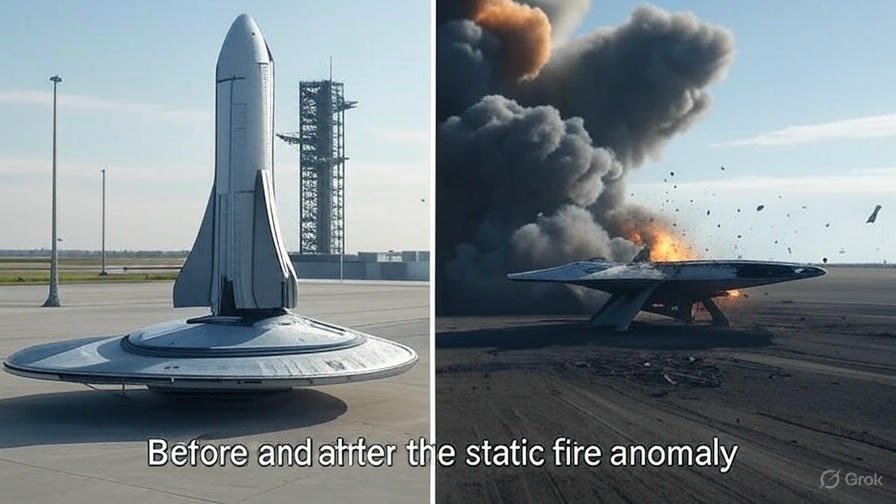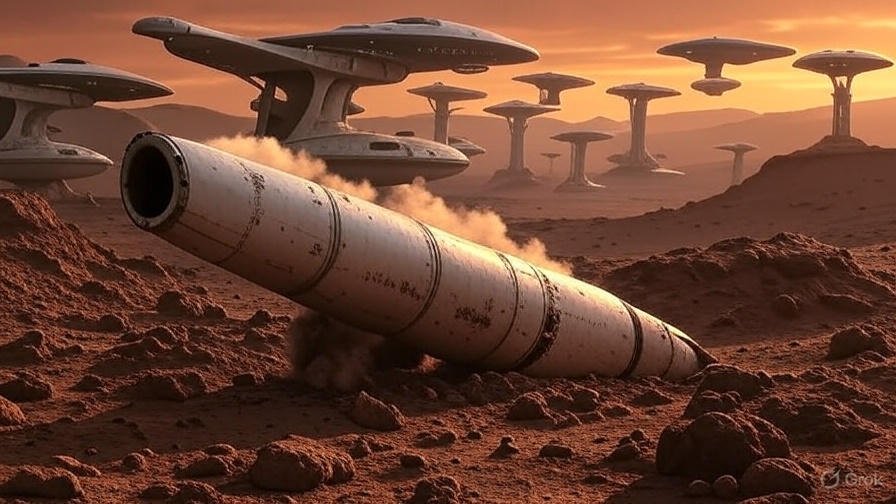SpaceX Starship 36 Explodes in Fiery Setback During Critical Pre-Flight Test*

The deafening roar of Raptor engines igniting at SpaceX’s Starbase facility in Boca Chica, Texas, ended abruptly on June 19, 2025, when Starship prototype Serial Number spacex starship 36 explosion. This critical static fire test—a routine pre-flight checkout—ended in a catastrophic fireball just seconds after ignition, rattling windows miles away and marking yet another dramatic setback in SpaceX’s quest to perfect its Mars-bound spacecraft.
What Happened: The Chain of Failure

According to eyewitnesses and SpaceX livestream data, the explosion occurred during a “wet dress rehearsal” combined with a static fire test. This procedure involves fully loading the spacecraft’s cryogenic fuel (liquid oxygen and methane) and firing its engines while anchored to the launch pad. Key moments:
- T-00:01: All six Raptor engines ignited successfully.
- T+00:03: A massive plume of white vapor erupted near the ship’s base, suggesting a critical fuel leak.
- T+00:05: Fire engulfed the engine bay, triggering a rapid unscheduled disassembly (SpaceX’s euphemism for explosion).
- Aftermath: Debris scattered across the launch complex, though SpaceX confirmed no injuries. The orbital launch mount sustained minor damage.
Elon Musk later tweeted: “SN36 experienced a rapid propellant leak during static fire. Fix underway. Data is all that matters.” SpaceX Official Starship Updates
Why SN36’s Failure Stings
This was no ordinary prototype. SN36 was slated for SpaceX’s 10th Starship orbital test flight within weeks—a mission aiming to demonstrate in-space refueling tech vital for NASA’s Artemis moon missions. The explosion highlights three persistent vulnerabilities:
- Fuel System Flaws: Recurring leaks in cryogenic plumbing (a challenge since SN1).
- Engine Reliability: Raptor engines still face “combustion instability” under stress.
- Pad Resilience: Launch infrastructure repeatedly damaged during failures.

A History of “Learning Through Fire”
SpaceX’s iterative design philosophy embraces failure, but SN36’s fate fits a troubling pattern:
| Flight | Outcome | Issue |
|---|---|---|
| SN8 | Crash | Fuel header tank pressure |
| SN11 | Mid-air burst | Engine fire |
| SN24 | Pad explosion | Methane leak |
| SN36 | Pad explosion | Static fire leak |
Despite 9 prior flights, Starship has yet to achieve full mission success. Yet each failure has driven upgrades: SN36 featured hot-staging rings and improved heat shielding. As aerospace engineer Laura Forczyk notes: “SpaceX moves faster than any entity in space history. But cryogenic fluid dynamics remain brutally hard to master at this scale.”SpaceX’s Rapid Iteration Philosophy (The Verge)
The Ripple Effect: Artemis, Starlink, and Mars
SN36’s failure has immediate consequences:
- NASA’s Artemis III: Delays Starship’s human lunar lander demo, pushing moon landing timelines to late 2026.
- Starlink V2 Satellites: Awaiting Starship’s heavy-lift capability for deployment.
- Mars Timeline: Musk’s 2030 goal for crewed missions now looks increasingly untenable.

What’s Next for SpaceX after spacex starship 36 explosion?
The path forward is clear—and familiar:
- Debris Analysis: Teams scour wreckage for leak origins.
- Pad Repairs: Reinforce methane venting systems.
- SN37: Already in construction; flight planned for August 2025.
NASA Administrator Bill Nelson reaffirmed support: “SpaceX’s transparency helps us all learn. This won’t derail Artemis.” NASA’s Artemis Program
The Bigger Picture: Failure as Fuel
Critics argue Starship’s “fail-fast” approach wastes resources. Supporters counter that SpaceX has:
- Slashed launch costs by 90% vs. legacy rockets.
- Validated 120+ successful Raptor engine test-firings.
- Achieved orbit with Starship in March 2025 (Flight 9).
As astrophysicist Neil deGrasse Tyson observed: “Rockets explode until they don’t. That’s engineering.”
Conclusion: The Unflinching March to Mars:

The SN36 explosion is a harsh reminder: revolutionizing spaceflight demands audacity and resilience. While delays are inevitable, SpaceX’s pace remains unmatched. Starship will fly again—soon—carrying humanity’s ambitions into orbit, to the moon, and beyond.
Key Takeaways:
- Explosion caused by propellant leak during static fire.
- No injuries; pad damage minimal.
- Flight 10 delayed until August 2025.
- NASA’s Artemis timelines under pressure.
